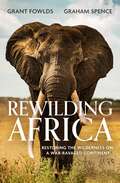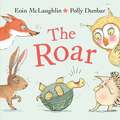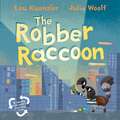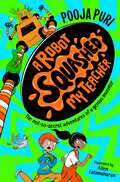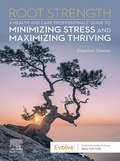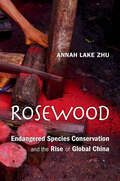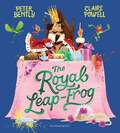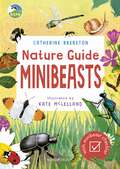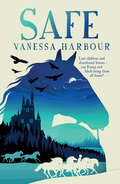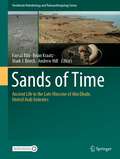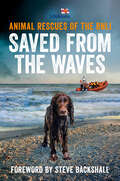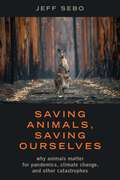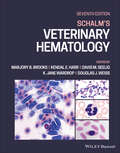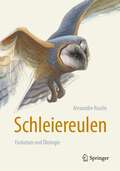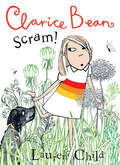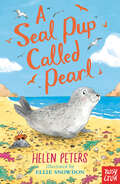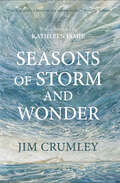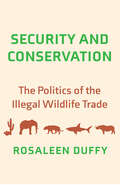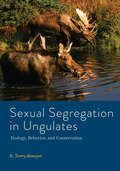- Table View
- List View
Renal Physiology and Hydrosaline Metabolism
by Pedro A. Gallardo Carlos P. VioThis volume discusses renal function and the mechanisms by which the kidney regulates the composition and volume of the extracellular fluid. It also highlights the role of the kidney in the development and progression of arterial hypertension. Most textbooks of renal physiology are based in mammalians physiology and mostly human physiology of the kidney, but the authors considered that this book should also include other species to include the broad spectrum of students and researchers in the life and biomedical sciences. In this sense, we included chapters such as comparative osmoregulation in non-mammalian vertebrates and we emphasize that in vertebrates like fish, reptiles, amphibians and birds, the kidneys and extrarenal organs are vital to maintain fluid homeostasis. The purpose of the book is to provide a concise frame of knowledge in a clear and direct language, of the renal function to medical and biological sciences students. In the context of normal renal function, we provide pathophysiological basis for chronic renal diseases and hypertension with the participation of renal vasoactive hormones. This book is used as textbook in several physiology courses for medical, nursing and biological sciences students at the Pontifical Catholic University of Chile, Finis Terrae University, Universidad San Sebastian as well as other universities.
Reproductive Strategies in Insects
by Omkar Geetanjali MishraReproduction is one of the most inherent tasks that all living organisms are actively involved in. It forms the backbone of their existence with all evolutionary energies directed over billion years of creation into maximizing reproductive effort. For so simple and directed a need such as maximizing reproduction, it is interesting to see how much diversity and complexity exists in this task. Each organism despite having the same end goal employs different strategies. The complexities, intricacies and strategies of successful reproduction while being extremely fascinating are equally befuddling. Reproductive Strategies in Insects provides an expansive critical look at the reproductive strategies of the most diverse group of animals, the insects. Insects which inhabit myriad niches in all ecosystems except the oceans, show the most diverse reproductive strategies ranging from simplest to most complex. Reproductive strategies, viz., search for mates, number of mates, display of mate quality, assessment of mate quality, acceptance of mate, rejection of mates, forced copulations, the fight for paternity pre, during and post copula, the modulation of paternity, ovipositional strategies and parental care are described in detail in this book. Also, each strategy in analyzed in relation to its morphological, physiological, ethological, ecological and evolutionary aspects. Features: Covers a wide variety of reproductive strategies, A detailed step by step description of reproductive strategies. Discusses morphological, physiological, ethological, ecological and evolutionary aspects. Modulation of these strategies and responsible modulatory factors are also discussed. Well-illustrated. Recent research results and probable future research directions. This is a niche reference book for ethologists, biologists studying behavioural evolution and entomologists. It may also be used as a textbook for a graduate level course in behaviour.
Reproductive Strategies in Insects
by OmkarReproduction is one of the most inherent tasks that all living organisms are actively involved in. It forms the backbone of their existence with all evolutionary energies directed over billion years of creation into maximizing reproductive effort. For so simple and directed a need such as maximizing reproduction, it is interesting to see how much diversity and complexity exists in this task. Each organism despite having the same end goal employs different strategies. The complexities, intricacies and strategies of successful reproduction while being extremely fascinating are equally befuddling. Reproductive Strategies in Insects provides an expansive critical look at the reproductive strategies of the most diverse group of animals, the insects. Insects which inhabit myriad niches in all ecosystems except the oceans, show the most diverse reproductive strategies ranging from simplest to most complex. Reproductive strategies, viz., search for mates, number of mates, display of mate quality, assessment of mate quality, acceptance of mate, rejection of mates, forced copulations, the fight for paternity pre, during and post copula, the modulation of paternity, ovipositional strategies and parental care are described in detail in this book. Also, each strategy in analyzed in relation to its morphological, physiological, ethological, ecological and evolutionary aspects. Features: Covers a wide variety of reproductive strategies, A detailed step by step description of reproductive strategies. Discusses morphological, physiological, ethological, ecological and evolutionary aspects. Modulation of these strategies and responsible modulatory factors are also discussed. Well-illustrated. Recent research results and probable future research directions. This is a niche reference book for ethologists, biologists studying behavioural evolution and entomologists. It may also be used as a textbook for a graduate level course in behaviour.
Review Questions and Answers for Veterinary Technicians E-Book
by Heather PrendergastPrepare for VTNE success! Review Questions and Answers for Veterinary Technicians, 6th Edition provides 5,000 VTNE-style questions that have been reviewed and updated to reflect the latest changes to the Veterinary Technician National Examination. The book begins with multiple-choice questions on basic knowledge, including anatomy and physiology, hospital management, calculations, and terminology. It continues with a Q&A review of core subjects such as pharmacology, surgical nursing, laboratory procedures, diagnostic imaging, and pain management. Written by veterinary technology educator Heather Prendergast, this review includes an Evolve website allowing you to create customized, timed practice exams that mirror the VTNE experience.More than 5,000 multiple-choice questions are rigorously reviewed, mirror the type of questions found on the VTNE, and are designed to test factual knowledge, reasoning skills, and clinical judgment.Detailed rationales are included in the print text and on the Evolve website, reinforcing student knowledge and providing the reasoning behind answers.Organization of the book into primary subject areas reflects the latest version of the VTNE.Customized exam generator on Evolve offers a simulated test-taking experience with customized practice tests and timed practice exams with instant feedback and extended rationales.NEW! More than 200 new questions are added to this edition.
Rewilding Africa: Restoring the Wilderness on a War-ravaged Continent
by Grant Fowlds Graham SpenceConservationist Grant Fowlds lives to save and protect Africa's rhinos, elephants and other iconic wildlife, to preserve their habitats, to increase their range and bring back the animals where they have been decimated by decades of war, as in Angola, Mozambique and the Democratic Republic of the Congo. This vivid account of his work tells of a fellow conservationist tragically killed by the elephants he was seeking to save and a face-off with poachers, impoverished rural people exploited by rapacious local businessmen. Fowlds describes the impact of the Covid pandemic on conservation efforts, the vital wildlife tourism that sustains these and rural communities; and tells of conservationists' efforts to support people through the crisis. Lockdowns may have brought a welcome lull in rhino and other poaching, but also brought precious tourism to a standstill. He shows how the pandemic has highlighted the danger to the world of the illicit trade in endangered wildlife, some of it sold in 'wet markets', where pathogens incubate and spread. He describes a restoration project of apartheid-era, ex-South African soldiers seeking to make reparations in Angola, engulfed for many years in a profoundly damaging civil war, which drew in outside forces, from Cuba, Russia and South Africa, with a catastophic impact on that country's wildlife. Those who fund conservation, whether in the US, Zambia or South Africa itself, are of vital importance to efforts to conserve and rewild: some supposed angel-investors turn out to be not what they had appeared, some are thwarted in their efforts, but others are open-hearted and generous in the extreme, which makes their sudden, unexpected death an even greater tragedy. A passionate desire to conserve nature has also brought conservationists previously active in far-off Venezuela to southern Africa. Fowlds describes fraught meetings to negotiate the coexistence of wildlife and rural communities. There are vivid accounts of the skilled and dangerous work of using helicopters to keep wildebeest, carrying disease, and cattle apart, and to keep elephants from damaging communal land and eating crops such as sugar cane. He tells of a project to restore Africa's previously vast herds of elephants, particularly the famed 'tuskers', with their unusually large tusks, once prized and hunted almost to extinction. The range expansion that this entails is key to enabling Africa's iconic wildlife to survive, to preserving its wilderness and, in turn, helping humankind to survive.There is a heartening look at conservation efforts in Mozambique, a country scarred by years of war, which are starting to bear fruit, though just as a new ISIS insurgency creates havoc in the north of the country. What will humanity's relationship with nature be post-pandemic? Will we have begun to learn that by conserving iconic wildlife and their habitats we help to preserve and restore precious pockets of wilderness, which are so vital not only the survival of wildlife, but to our own survival on our one precious planet.
The Roar (Hedgehog & Friends)
by Eoin McLaughlinThere were so many things that Tortoise wanted to do.So many games to play and rocks to climb.Oops.Tortoise was stuck.Being stuck made Tortoise cross.Tortoise is not having a good day and now he's stuck in a hole and and is far too cross for hugs. Hedgehog sits and waits and then makes Tortoise laugh - taking the time to let the moment pass, and acknowledge how Tortoise feels.
The Robber Raccoon
by Lou KuenzlerRosie Raccoon was up to no goodout and about in a grand neighbourhood.It seems Rosie is up to no good as she breaks into the houses of Bear, Flamingo and Snake, but when Officer Skunk catches her in the act all she has taken is junk! But Rosie has a plan to recycle these treasures and make something new . . .With a topical environmental theme, Lou's fantastic rhyming text and Julia's adorable illustrations, this picture book will be irresistible to young readers.
A Robot Squashed My Teacher (A Dinosaur Ate My Sister)
by Pooja PuriA Robot Squashed My Teacher is the laugh-out-loud, wacky adventure by Pooja Puri brilliantly illustrated by Allen Fatiaharan, the sequel to the Marcus Rashford Bookclub Selected book A Dinosaur Ate My Sister. Before you start reading, there are a few things you should know:1. I, Esha Verma, am a genius inventor extraordinaire.2. I like lists.3. I did not mean to turn my teacher into a pigeon. Some things just can't be helped.Esha Verma, her snotty apprentice Broccoli and his secretly cunning pet tortoise have a dream. They are going to win the legendary Brain Trophy – the ultimate inventing prize. This year's entry: The RoarEasy – a gadget that lets the user speak to animals.But when Esha's arch-nemesis, fellow inventor Ernie, lands her in detention, the RoarEasy malfunctions and suddenly Monsieur Crépeau is TRANSFORMED INTO A PIGEON.Luckily for Esha, she knows exactly what she needs to repair her invention and where to find it: locked away in the mysterious Central Research Laboratories. She, Broccoli, Archibald and Monsieur Crépeau will have to go undercover and break into the labs before the competition to return Monsieur Crépeau to his human form. And with Ernie following them, determined to foil their plans as they face giant robots, killer plants, shrinking machines, robo-spiders, clouds that make you float and terrifying twisters, they're going to need all the help they can get to get out of this wacky pickle.
Root Strength E-Book: A Health and Care Professionals Guide to Minimizing Stress and Maximizing Thriving
by Shannon DamesDevelop resilience and thrive as a care professional! Root Strength: A Health and Care Professionals’ Guide to Minimizing Stress and Maximizing Thriving discusses principles of self-care that can help you prevent emotional fatigue and job burnout in highly stressful workplaces. An evidence-based approach examines how the care professional can develop self-compassion, mindfulness, relationships with co-workers, and perceived satisfaction with one’s career. Written by noted educator and researcher Shannon Dames, this practical manual shows how you can apply these insights on the job and enhance your personal well-being in real-world health care settings. With the prevalence of mental health issues among care professionals — including rates of PTSD and major depressive disorder (MDD) — appearing much higher than that in the general population, never has a resource like this been more required! Focus on both theory and practice allows for self-assessment and the ability to build resilience and thrive, with concepts underpinned by research. UNIQUE! Journeys case studies highlight a care professional’s real-world experience/concerns, encouraging you to think about how you would handle the situation as you read through the chapter; the chapter closes with an effective method to handle the real-life situation, demonstrating how to apply the lessons learned. UNIQUE! Clear and conversational writing style and metaphorical roots/tree framework makes it easier to understand concepts. Practical exercises throughout the text allow you to build and strengthen your own metaphorical roots. Vignettes demonstrate how concepts apply to real-world scenarios. Attuning for the Journey Ahead sums up the content at the end of each chapter, ensuring that you understand the key concepts. UNIQUE! Special boxes contributed by Dr. Crosbie Watler, MD, FRCPC help you understand and navigate through professionals’ mental health challenges.
Rosewood: Endangered Species Conservation and the Rise of Global China
by Annah Lake ZhuA riveting study of the booming rosewood trade between China and Madagascar uncovers an alternative approach to environmentalism that disrupts Western models. Rosewood is the world’s most trafficked endangered species by value, accounting for larger outlays than ivory, rhino horn, and big cats put together. Nearly all rosewood logs are sent to China, fueling a $26 billion market for classically styled furniture. Vast expeditions across Asia and Africa search for the majestic timber, and legions of Chinese ships sail for Madagascar, where rosewood is purchased straight from the forest. The international response has been to interdict the trade, but in this incisive account Annah Lake Zhu suggests that environmentalists have misunderstood both the intent and the effect of China’s appetite for rosewood, causing social and ecological damage in the process. For one thing, Chinese consumers are understandably seeking to reclaim their cultural heritage, restoring a centuries-old tradition of home furnishing that the Cultural Revolution had condemned. In addition, Chinese firms are investing in environmental preservation. Far from simply exploiting the tree, businesses are carefully managing valuable forests and experimenting with extensive new plantings. This sustainable-use paradigm differs dramatically from the conservation norms preferred by Western-dominated NGOs, whose trade bans have prompted speculation and high prices, even encouraging criminal activity. Meanwhile, attempts to arm conservation task forces—militias meant to guard the forests—have backfired. Drawing on years of fieldwork in China and Madagascar, Rosewood upends the pieties of the global aid industry. Zhu offers a rigorous look at what environmentalism and biodiversity protection might look like in a world no longer dominated by the West.
The Royal Leap-Frog
by Peter BentlyA hilarious tale of rivalry, boasting and custardy chaos from the bestselling creators of The King's Birthday Suit.When a flea, a grasshopper and a frog compete to show the King who can jump the highest, it causes CHAOS in the royal dining hall. Who can jump the highest? Can the clever leap-frog use his wits to win?And will the Emperor's dog EVER get rid of the flea?This funny and irresistible retelling of Hans Christian Andersen's classic fable, 'The Leap Frog', will make children laugh - AND show them that brains are sometimes better than brawn! With a pitch-perfect rhyming text by bestselling Peter Bently, and gloriously detailed illustrations by award-winning Claire Powell, this is an unmissable treat.
RSPB Nature Guide: Minibeasts
by Catherine BreretonWhether in your garden, kitchen, bathroom or under a log in the woods, minibeasts are everywhere to be found! So grab this handy nature guide and explore every nook and cranny you can find, there might just be a surprise.Did you know that honey bees have a special stomach for honey? Or that butterflies got their name from butter?From gorgeous orange-tip butterflies to the fierce-looking stag beetle, get ready to find out about over 190 different minibeasts and bugs. There are so many wonderful living things to meet in this children's spotter's guide, published in collaboration with the RSPB, the largest wildlife conservation charity in Europe.You will learn what a dragonfly's lifecycle looks like, which habitat each insect enjoys most and what kind of minibeasts you may be likely to spot each season. This guide covers all grounds when it comes to minibeast-watching. Whether you're in a city park or on a walk in the woods, don't ever leave your RSPB Nature Guide: Minibeasts at home! Includes information on how to make your green space bug friendly, activities such as making a wormery and a minibeast checklist so you can tick off everything you spot!With beautiful and life-like illustrations by Kate McLelland throughout, this is the perfect contemporary pocket guide for young wildlife watchers and adult nature enthusiasts alike. This is the third book in the RSPB Nature Guide series, following Birds and Wildlife.
Safe
by Vanessa HarbourIn the chaotic last days of World War II, Jacob and Kizzy are tricked into a life or death journey. Far from home, they are attacked and only just escape. They hide in a seemingly deserted mansion, but they keep hearing strange noises... Investigating, they find it shelters not only forty abandoned horses but a small band of lost children, displaced by the war. With danger on every side, can Kizzy and Jakob keep them safe and get them all home?
Sands of Time: Ancient Life in the Late Miocene of Abu Dhabi, United Arab Emirates (Vertebrate Paleobiology and Paleoanthropology)
by Faysal Bibi Brian Kraatz Mark J. Beech Andrew HillThis monograph presents the results of over 10 years of paleontological and geological survey in the Baynunah Formation of the United Arab Emirates. Exposed widely in western Abu Dhabi Emirate, the Baynunah Formation and its fossils provide the only record of terrestrial environments and evolution in the Arabian Peninsula during the late Miocene epoch (12-5 Ma). This volume describes new fossils collected since 2002, presented systematically by taxon, and including mammals, reptiles, and invertebrates, as well as fossil trackways. The discoveries are framed within the results of new geological, geochemical, and geochrononological analyses, providing an updated and synthetic view of the age, environments, and biogeographic relationships of this important fossil assemblage.
Saved from the Waves: Animal Rescues Of The Rnli
by The RNLIShe has to be OK, I pleaded silently to myself. She has to be. ‘We’ve alerted the RNLI and they’re sending a lifeboat out.’ ‘The RNLI?’ I said, surprised. ‘They do that?’
Saving Animals, Saving Ourselves: Why Animals Matter for Pandemics, Climate Change, and other Catastrophes
by Jeff SeboIn 2020, COVID-19, the Australia bushfires, and other global threats served as vivid reminders that human and nonhuman fates are increasingly linked. Human use of nonhuman animals contributes to pandemics, climate change, and other global threats which, in turn, contribute to biodiversity loss, ecosystem collapse, and nonhuman suffering. Jeff Sebo argues that humans have a moral responsibility to include animals in global health and environmental policy. In particular, we should reduce our use of animals as part of our pandemic and climate change mitigation efforts and increase our support for animals as part of our adaptation efforts. Applying and extending frameworks such as One Health and the Green New Deal, Sebo calls for reducing support for factory farming, deforestation, and the wildlife trade; increasing support for humane, healthful, and sustainable alternatives; and considering human and nonhuman needs holistically. Sebo also considers connections with practical issues such as education, employment, social services, and infrastructure, as well as with theoretical issues such as well-being, moral status, political status, and population ethics. In all cases, he shows that these issues are both important and complex, and that we should neither underestimate our responsibilities because of our limitations, nor underestimate our limitations because of our responsibilities. Both an urgent call to action and a survey of what ethical and effective action requires, Saving Animals, Saving Ourselves is an invaluable resource for scholars, advocates, policy-makers, and anyone interested in what kind of world we should attempt to build and how.
Saving H'non: Chang and the Elephant (Return to the Wild #2)
by Nguyen Thi TrangWhen Chang meets an elderly elephant named H’non, she makes a promise to rescue her from a lifetime of captivity. Together, they embark on a quest to find a new home where H’non can live as nature intended – wild and free.Created by environmental activist Trang Nguyen and award-winning manga artist Jeet Zdung, Saving H'non: Chang and the Elephant is an inspirational graphic-novel adventure, based on a true story, about a young conservationist who overcomes the odds to give H'non the elephant the life she deserves after 50 years of hardship.Chang’s daring story is for any young reader, animal lover and intrepid explorer who’s ready for adventure!PRAISE FOR SAVING SORYA: CHANG AND THE SUN BEAR– Nominated for the 2023 Yoto Carnegie Medal for Illustration– "A beautiful, moving and uplifting tale of perseverance and overcoming challenge, and how small steps can make a big difference.” - BookTrust– “I cannot praise this book enough.” Mat Tobin– "The epitome of wild and free." - Kirkus Reviews, starred review– "Stirring and gorgeously rendered, this eco-conscious tale is a superb purchase for all libraries." - School Library Journal, starred review
Schalm's Veterinary Hematology
by Marjory B. Brooks Kendal E. Harr Davis M. Seelig K. Jane Wardrop Douglas J. WeissSCHALM’S VETERINARY HEMATOLOGY An updated guide to veterinary hematology with expanded coverage on a variety of topics The revised seventh edition of Schalm’s Veterinary Hematology is updated to provide a comprehensive review of all topics related to disorders of the blood in animals. Designed as a gold-standard reference, this text covers a wide range of species in both confined and free-range populations, reflects the most recent trends in hematology diagnostics, and discusses recent advances in traditional techniques. Edited and written by an international team of experts in the field, the book represents an accessible yet in-depth resource for information on veterinary hematology. The new edition includes a hemolymphatic tissue section that covers current understanding of basic science and the species-specific hematology section is further expanded from previous editions. New chapters address emerging topics in hematology, and existing chapters have been revised and rearranged to improve readability and simplify access to the material. This seventh edition: Updates the most complete reference on veterinary hematology across species Contains a new section on basic biology of hemolymphatic tissues Expands coverage of species-specific hematology Presents new and emerging topics in blood disorders and diagnostic techniques Features a reorganized contents list for an integrated, easy to use reference Written for veterinary clinical pathologists and residents, diagnostic laboratory staff, internists, and specialists, Schalm’s Veterinary Hematology is the most comprehensive and up-to-date reference on the topic.
Schalm's Veterinary Hematology
by Marjory B. Brooks Kendal E. Harr Davis M. Seelig K. Jane Wardrop Douglas J. WeissSCHALM’S VETERINARY HEMATOLOGY An updated guide to veterinary hematology with expanded coverage on a variety of topics The revised seventh edition of Schalm’s Veterinary Hematology is updated to provide a comprehensive review of all topics related to disorders of the blood in animals. Designed as a gold-standard reference, this text covers a wide range of species in both confined and free-range populations, reflects the most recent trends in hematology diagnostics, and discusses recent advances in traditional techniques. Edited and written by an international team of experts in the field, the book represents an accessible yet in-depth resource for information on veterinary hematology. The new edition includes a hemolymphatic tissue section that covers current understanding of basic science and the species-specific hematology section is further expanded from previous editions. New chapters address emerging topics in hematology, and existing chapters have been revised and rearranged to improve readability and simplify access to the material. This seventh edition: Updates the most complete reference on veterinary hematology across species Contains a new section on basic biology of hemolymphatic tissues Expands coverage of species-specific hematology Presents new and emerging topics in blood disorders and diagnostic techniques Features a reorganized contents list for an integrated, easy to use reference Written for veterinary clinical pathologists and residents, diagnostic laboratory staff, internists, and specialists, Schalm’s Veterinary Hematology is the most comprehensive and up-to-date reference on the topic.
Schleiereulen: Evolution und Ökologie
by Alexandre RoulinDie Schleiereulen sind mit ihrem herzförmigen Gesicht, dem gelbbraunen Rücken und Flügeln und der reinweißen Unterseite ein unverwechselbarer und beliebter Vogel. Sie haben im Laufe der Geschichte Menschen aus vielen Kulturen fasziniert. Alexandre Roulin schildert in diesem Buch, welche evolutionären Anpassungen diesen Vogel so erfolgreich gemacht haben und wie sich die zunehmenden menschlichen Störungen auf die Tiere auswirken. Er beschreibt Evolution, Ökologie und Verhalten der Schleiereule und ihrer Verwandten und bespricht Themen wie das hohe Reproduktionspotenzial, Physiologie, soziale und familiäre Interaktion, ausgeprägte Farbvariation und globale Verbreitung sowie Phylogenie. Der Text ist leicht zugänglich. Ein besonderes Highlight sind die künstlerischen Zeichnungen. Das Buch richtet sich sowohl an Forscher, Studierende der Ornithologie, Verhaltensbiologie, Ökologie, Naturschutz- und Evolutionsbiologie als auch an Hobby-Ornithologen und Naturliebhaber.
Scram! (Clarice Bean)
by Lauren ChildThe exceptionordinary, effervescent Clarice Bean is back with her trademark heart and humour in this beautifully illustrated story by former Children’s Laureate Lauren Child – a delightful summer read for the entire family!
A Seal Pup Called Pearl (The Jasmine Green Series #13)
by Helen PetersThe thirteenth in a fantastic series of animal stories for younger readers by Waterstones Children's Book Prize-shortlisted author Helen Peters, with beautiful black-and-white illustrations by Ellie Snowdon.Jasmine's dad is a farmer, and her mum is a large-animal vet, so Jasmine spends a lot of time caring for animals and keeping them out of trouble. Unfortunately, this often means she gets into hot water herself...When a newborn seal pup is abandoned on the riverbank, Jasmine and Tom are determined to care for her until she's old enough to be released. But there are other dangers for baby seals, and when Pearl's life is threatened again, nobody knows what the future will hold. Will Pearl ever be able to return to the sea?Brilliant storytelling that will make you laugh and cry, this is Dick King-Smith for a new generation. Perfect for readers aged seven and up.Check out Jasmine's other adventures: A Piglet Called Truffle, A Kitten Called Holly, A Sheepdog Called Sky and many more!
Seasons of Storm and Wonder
by Jim CrumleyFrom Jim Crumley, the "pre-eminent Scottish nature-writer” (Guardian), this landmark volume documents the extraordinary natural life of the Scottish Highlands and bears witness to the toll climate chaos is already taking on our wildlife, habitats and biodiversity – laying bare what is at stake for future generations. A display of head-turning autumn finery on Skye provokes Jim Crumley to contemplate both the glories of the season and how far the seasons themselves have shapeshifted since his early days observing his natural surroundings. After a lifetime immersed in Scotland's landscapes and enriched by occasional forays in other northern lands, Jim has amassed knowledge, insight and a bank of memorable imagery chronicling the wonder, tumult and spectacle of nature’s seasonal transformations. He has witnessed not only nature’s unparalleled beauty, but also how climate chaos and humankind has brought unwanted drama to wildlife and widespread destruction of ecosystems and habitats. In this landmark volume, Jim combines lyrical prose and passionate eloquence to lay bare the impact of global warming and urge us all towards a more daring conservation vision that embraces everything from the mountain treeline to a second spring for the wolf.
Security and Conservation: The Politics of the Illegal Wildlife Trade
by Rosaleen DuffyAn exploration of the scale, practical reality, and future implications of the growing integration of biodiversity conservation with global security concerns “There are few keener observers of international biodiversity conservation than Rosaleen Duffy. With a ferocity of purpose, she investigates the tenuous connection and nuances among illegal wildlife trade, terrorism threats, and national security.”—Steven R. Brechin, Rutgers University, New Brunswick Debates regarding environmental security risks have generally focused on climate change and geopolitical water conflicts. Biodiversity conservation, however, is increasingly identified as a critical contributor to national and global security. The illegal wildlife trade is often articulated as a driver of biodiversity losses, and as a source of finance for organized crime networks, armed groups, and even terrorist networks. Conservationists, international organizations, and national governments have raised concerns about “convergence” of wildlife trafficking with other serious offenses, including theft, fraud, corruption, drugs and human trafficking, counterfeiting, firearms smuggling, and money laundering. In Security and Conservation, Rosaleen Duffy examines the scale, practical reality, and future implications of the growing integration of biodiversity conservation with global security concerns. Duffy takes a political ecology approach to develop a deeper understanding of how and why wildlife conservation turned toward security‑oriented approaches to tackle the illegal wildlife trade.
Sexual Segregation in Ungulates: Ecology, Behavior, and Conservation (Wildlife Management and Conservation)
by R. Terry BowyerWhy does it benefit some male and female animals to live separately?Sexual segregation, wherein the sexes of a species live apart for long periods of time, has far-reaching consequences for the ecology, behavior, and conservation of hooved mammals, which are called ungulates. Award-winning researcher R. Terry Bowyer has spent the past four decades unravelling the causes and consequences of this perplexing phenomenon by studying ungulates and the large carnivores that prey upon them. In Sexual Segregation in Ungulates, Bowyer's critical, thought-provoking approach helps resolve long-standing disagreements concerning sexual segregation and offers future pathways for species and habitat conservation. He highlights important elements of the natural history of wild ungulate species, including bighorn sheep and elk. He then uses this perspective to frame and test hypotheses illuminating the motivations behind sexual segregation. He investigates the role of sexual segregation in mechanisms underpinning ungulate mating systems, sexual dimorphism, paternal behavior, and population dynamics. Bowyer's research spans ecosystems from deserts to the Arctic and involves most species of ungulates inhabiting the North American continent. He also provides a timely review of sexual segregation for species of plants and other animals, including humans. Covering definitions, theory, findings, and practical applications of related study, Bowyer describes the behavioral patterns related to sexual segregation, explains how to detect these patterns, and considers the implications of sexual segregation for new approaches to conservation and management of ungulates and other species of wildlife.This book is essential reading for scientists and all those interested in the conservation and management of species, including wildlife professionals, hunters, outdoor enthusiasts, and naturalists.



